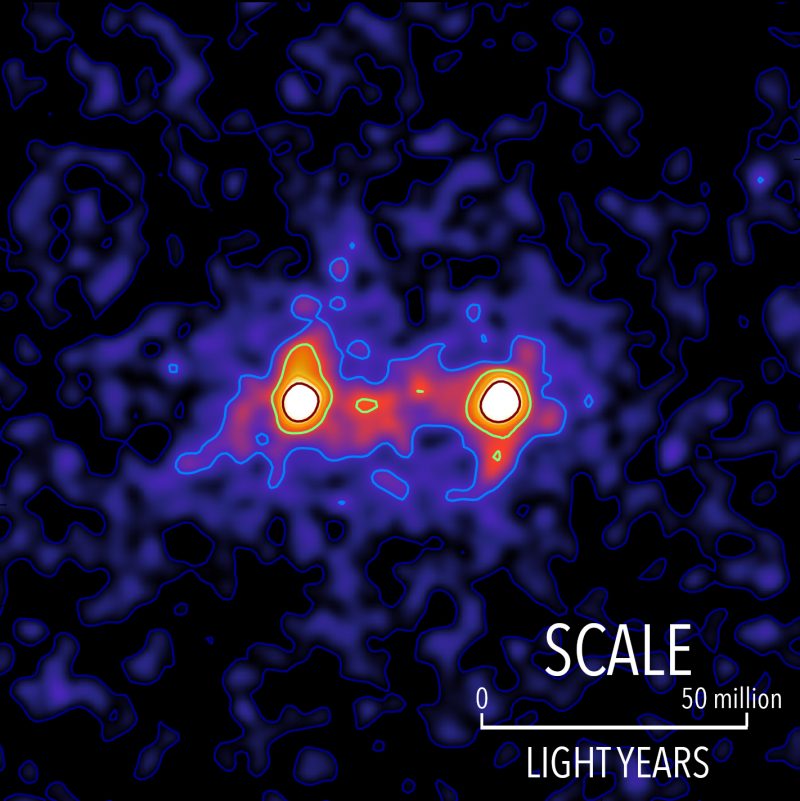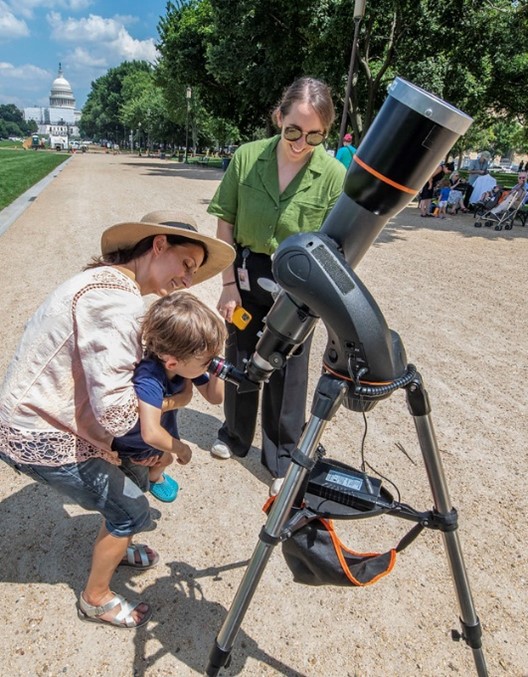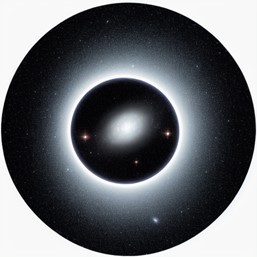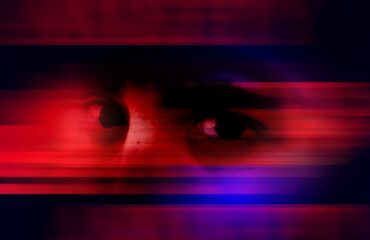
Dark matter filaments bridge the space between galaxies in this false-color map. The locations of bright galaxies are shown by the white regions and the presence of a dark matter filament bridging the galaxies is shown in red. Image via RAS / S. Epps & M. Hudson / University of Waterloo.
By Mariana Meneses
Have you ever imagined making new scientific discoveries about the universe?
The Dark Energy Explorers is a project developed by the Hobby-Eberly Telescope Dark Energy Experiment — HETDEX — at The University of Texas at Austin McDonald Observatory. The project marks the first large-scale effort seeking evidence of dark energy’s presence in the early universe.
Dark Energy Explorers is a citizen science project in which volunteers help astronomers find distant galaxies and identify false detections, to detect the presence of dark energy and its effects on the expansion of the universe.
The project uses the large Hobby-Eberly Telescope, based in Texas, which was designed to map the universe. With its mirror consisting of 91 identical six-sided segments joined like tiles, the HETDEX telescope will collect images of over one million galaxies that are 9 billion to 11 billion light-years away, which is the band in time that Dark Energy Explorers is examining.

“The passion behind all my research is to make cutting-edge astrophysics accessible and digestible to the general public, in a way that brings out the inner kid in all of us.” Lindsay House’s website
By identifying distant galaxies at varying time scales, the project will help astronomers to measure how fast the universe was expanding at different times in its history. The project will also help to identify false detections, which are objects that are not actually galaxies but are instead noise or other artifacts.
The researchers are using machine learning to train a computer to identify distant galaxies and false detections, and it is open to anyone who wants to participate.
The project is led by Lindsay House, a Ph.D. student at The University of Texas at Austin, NSF Fellow and NASA Citizen Science grant recipient who currently serves on the executive committee for the American Physical Society’s Forum on Engaging the Public. In her website, she states that “Allowing people of all racial, gender, and socioeconomic backgrounds to not only be exposed but be a part of STEM is at the forefront of my work.”
What is Dark Energy, and How Do We Look For Something That Can’t be Seen?
Dark energy is a mysterious form of energy that makes up about 68% of the universe. It is thought to be a repulsive force that is causing the universe to expand at an accelerating rate. Dark energy is not well understood, but it is one of the most important areas of research in cosmology today.
In 1998, astronomers discovered that the expansion of the universe is accelerating. This was a surprise, because scientists had expected the expansion to slow down due to the gravity of all the matter in the universe. The only way to explain the accelerating expansion was if there was some kind of repulsive force present, and because instruments could detect only its effects but not its cause, this force was dubbed “dark energy.”
The nature of Dark energy is a mystery. It could be a property of space itself, a cosmological constant of an unchanging energy density present throughout the universe. Or it might be a new kind of dynamic energy ‘fluid’ or field that fills space, which would mean that its properties can change over time with negative pressure that drives accelerated expansion. Alternatively, the observations attributed to dark energy could mean that Einstein’s theory of general relativity needs modification at cosmic scales.
The discovery of dark energy has revolutionized our understanding of the universe.
Dark energy does not interact with any of the other fundamental forces, such as gravity or electromagnetism. This makes it very difficult to detect, and we have only been able to infer its existence from its effects on the expansion of the universe.

Image generated using StarryAi.
If you are interested to participate in the quest for knowledge of dark energy, you can go to the project’s homepage and get started. The job, put simply, is to identify distant galaxies to help measure dark energy when the universe was relatively young, around 2 or 3 billion years old. Could you imagine being the first to see some of the earliest galaxies, stars, meteors and black holes?
In an interview for the first episodes of The Quantum Record’s new podcast, The Quantum Feedback Loop, Lindsay discussed what the ‘human’ element brings to the project. Check out a preview of the interview:
“We really found that the human’s eye ability for pattern recognition was really unmatched in the beginning, especially at looking at these really low signal objects or these really faraway galaxies. And so we used citizen science, and it’s worked really well for us in that we can do this a whole lot more efficiently, and we can get them also involved and hopefully the public in learning something as well.”
We agree with Lindsay that citizen science can help to foster a sense of wonder and curiosity about the natural world, which can lead to a lifelong interest in science. If you are interested in becoming a Dark Energy Explorer, check out the project’s website. Science awaits!
Do not miss out on The Quantum Feedback Loop episodes, for more in-depth discussions with some of our featured scientists and enthusiasts.
Check out this TQR article, where we featured a number of citizen science projects.
Want to expand your horizons? Explore these handpicked TQR articles:
- Time, Black Holes, and the Search for the Theory of Everything
- James Webb Space Telescope Advances Search for Signatures of Life
- The Puzzle of the Neutrino: Does It Account for Dark Matter?



